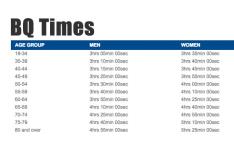
Some runners run many miles. Others run lots of fast intervals. When training for a marathon, have you ever wondered whether you should run high mileage or low mileage, should run longer than 20 miles in training, or which faster workouts are most helpful for marathoners?
With proper workouts and the right training approach, you'll be much closer to achieving your marathon goals. You don't have to spend countless hours weighing the pros and cons of a marathon training focused on quality or quantity. The answer is both.
However, there's a big caveat—your quality running doesn't have to be that fast. It's important to recognize that running a marathon is almost entirely aerobic ("with oxygen"). It requires virtually no anaerobic ("without oxygen") contribution. Several studies have shown that the marathon is 99 percent aerobic and 1 percent anaerobic. Your training should focus on the most important aspect of the race: it's aerobic component.
For marathoners, workouts don't resemble the classic "speed intervals" performed on a track. There's no need to run many (if at all) VO2max track workouts, especially for beginner and intermediate runners. Initially, improvement in marathon pace can come from improving your aerobic fitness.
More: Boost Your Endurance in 7 Simple Steps
To get faster over 26.2 miles, you simply have to do more endurance training. The principles that help marathoners improve are the same whether you're a 2:45 marathoner or a 4:45 marathoner. Let's dive in and see how you can run your next marathon PR.
3 Workouts for Marathoners
The top goal for any aspiring marathoner is to improve the factors involved in aerobic metabolism so that you can gain endurance. And there are three effective ways to improve your aerobic conditioning.
Run Long
The long run is the single most important workout for marathoners because it's the most specific to the race itself. Your goal should be to run about 18 to 22 miles during training, depending on your ability level. Of course, it's preferable to do more frequent long runs (once per week and a distance of 18+ miles).
You can make your long run even more specific to the marathon by running goal-marathon pace during the second half of the run. The classic "fast finish" long run should be a staple in many marathoners' training, including 4 to 10 miles of goal-marathon pace running during the second half of the long run.
- 1
- of
- 2
About the Author

Get ACTIVE on the Go


Couch to 5K®
The best way to get new runners off the couch and across the finish line of their first 5K.
Available for iOS | Android







Discuss This Article